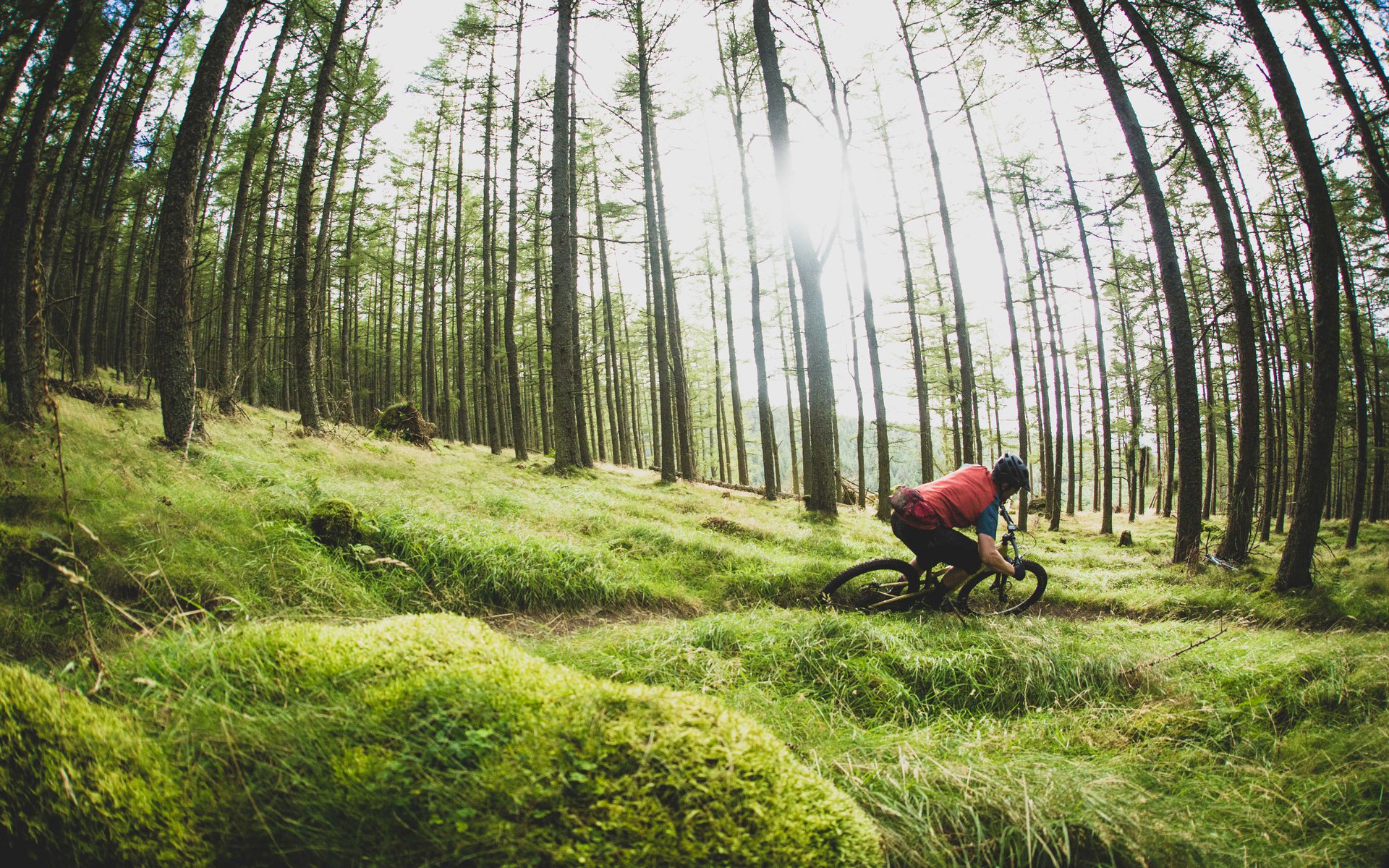
TRIP REPORT - PART 1
Scotland is a Mountain Bikers' Paradise
Something big is happening with MTB in Scotland. In September, I traveled to the Tweed Valley as a guest of Santa Cruz, to ride the trails, meet some of the people behind it all, and experience the beauty and magic of the area. This is part one of that story. Part two can be found here.
Light rain patters against the windows, catching glare from a lone street light on the corner. Inside a cozy stone house, the wood stove burns, the comforting smell of wood smoke mixes with the remnants of a homemade curry. In an adjacent room, the dim light reveals 7 or 8 characters, sitting or kneeling in a rough circle, poring over maps and engaged in debate over the future of one trail or another. Murmured phrases like 'galvanizing support', 'public trail days' and 'fighting for legitimacy' hang in the air. The list of issues they need to address in their jurisdiction is both very old (lone wolf builders, appeasing land owners) and very new (bureaucracy, grant applications, seeking approval for new trails). This could be the scene of a board meeting for the NSMBA, circa 2006. Instead it is a gathering of the board of directors of the TVTA - the Tweed Valley Trail Alliance - and even though some of the trails they are discussing are at least 20 years old, this organization is in its very infancy. Mountain biking is not new in Scotland - not by a long shot - but the endless demands of advocacy in the fight for trails and legitimacy in the area have just begun.
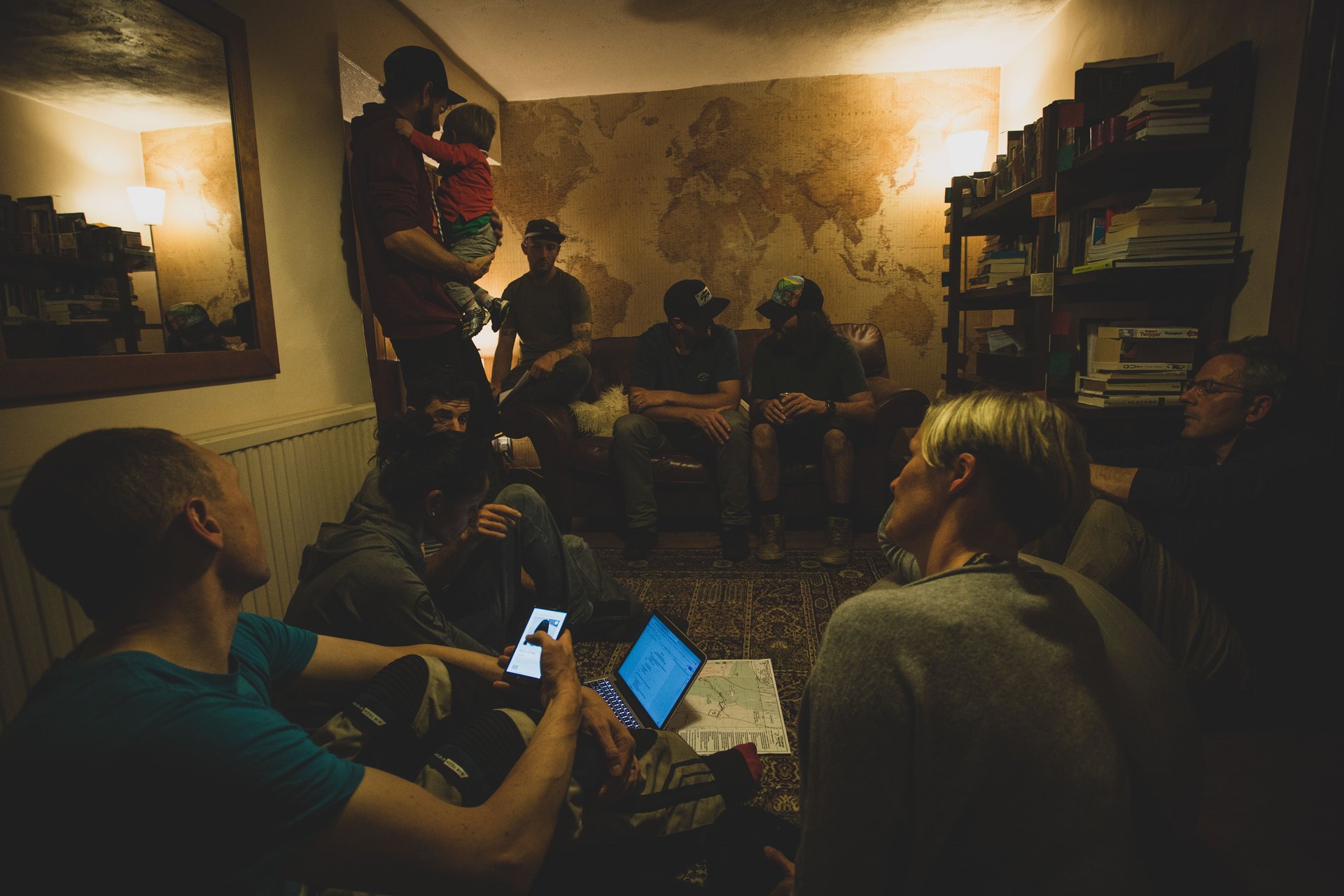
A typical board meeting of the newly-formed TVTA (Tweed Valley Trail Alliance). Not all that different from the trail advocates in your neighbourhood, probably.
Until recently, Scotland would not have made my short list of must-go mountain bike destinations. As far as the UK goes, I've always been MTB-curious, but other than the very famous and long-running World Cup in Ft. William, I didn't have much of an impression about how the riding would be in the land of golf and whisky. Had you asked, I would have conceded that golf and single malt would be more likely to get me there than singletrack. Of course I was aware of the many great riders that call the place home, not to mention the successful Tweed Valley EWS races in 2014 and 2015. These two facts, had I paid them the slightest forensic attention, should have been enough evidence that something big is going on with MTB in Scotland, but as much as I love traveling to ride in new places, it's easy to be lulled into complacency by the BC bubble. So, I'm not exactly sure what I was expecting out of a riding trip to Scotland, but then I went there to play golf, and, paradoxically, that got me really interested in the riding.
In a strange twist of fate, I was invited to go on this trip while I was already in Scotland (for the first time), albeit for a once-in-a-lifetime golfing trip with my dad, brother, and uncle. The call came from Seb Kemp, longtime friend of ours and a former nsmb contributor, and now the brand manager at Santa Cruz. "There's a ton of really good stuff happening in the Tweed Valley" he told me, "come along with me for a short trip, meet some of the people making it happen, ride the trails, and see what you think." Pro tip: that kind of invitation from someone like Seb should never be met with a 'no', and I soon found myself booked to return to Scotland less than a month after I had left. In that space of time, while still buzzing from my golf pilgrimage (Scotland and St. Andrews are to golfers as BC and Whistler are to mountain bikers), I started thinking about how economics, history, and the approach to recreation and land use impacts golfers and mountain bikers in ways more similar than the average player from either camp would care to guess.
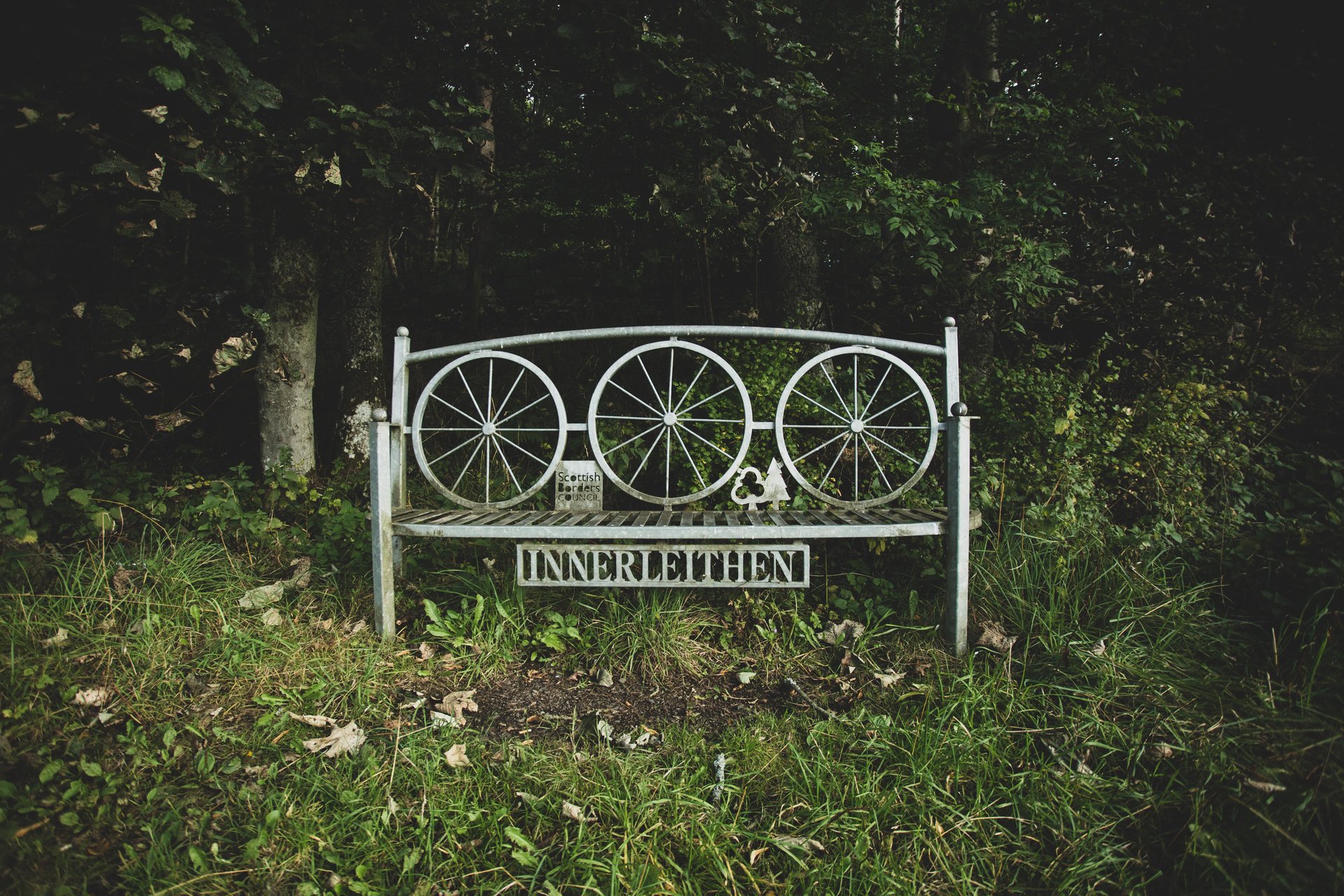
Innerleithen and the Tweed Valley has a very robust riding community that is being embraced at all levels of government and business.
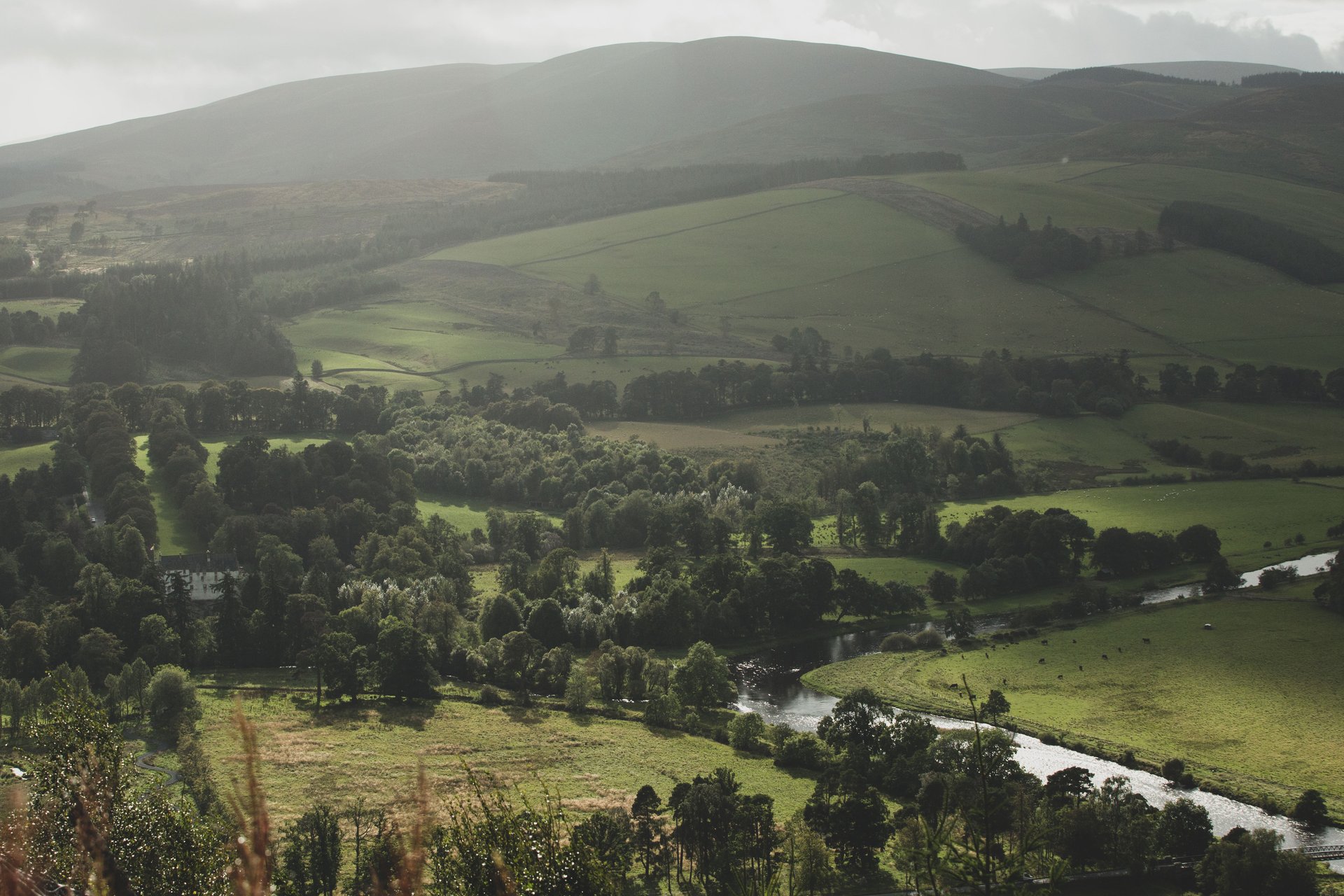
I imagined vistas like this, but didn't know how good the trails would be that are buried within those green hills.
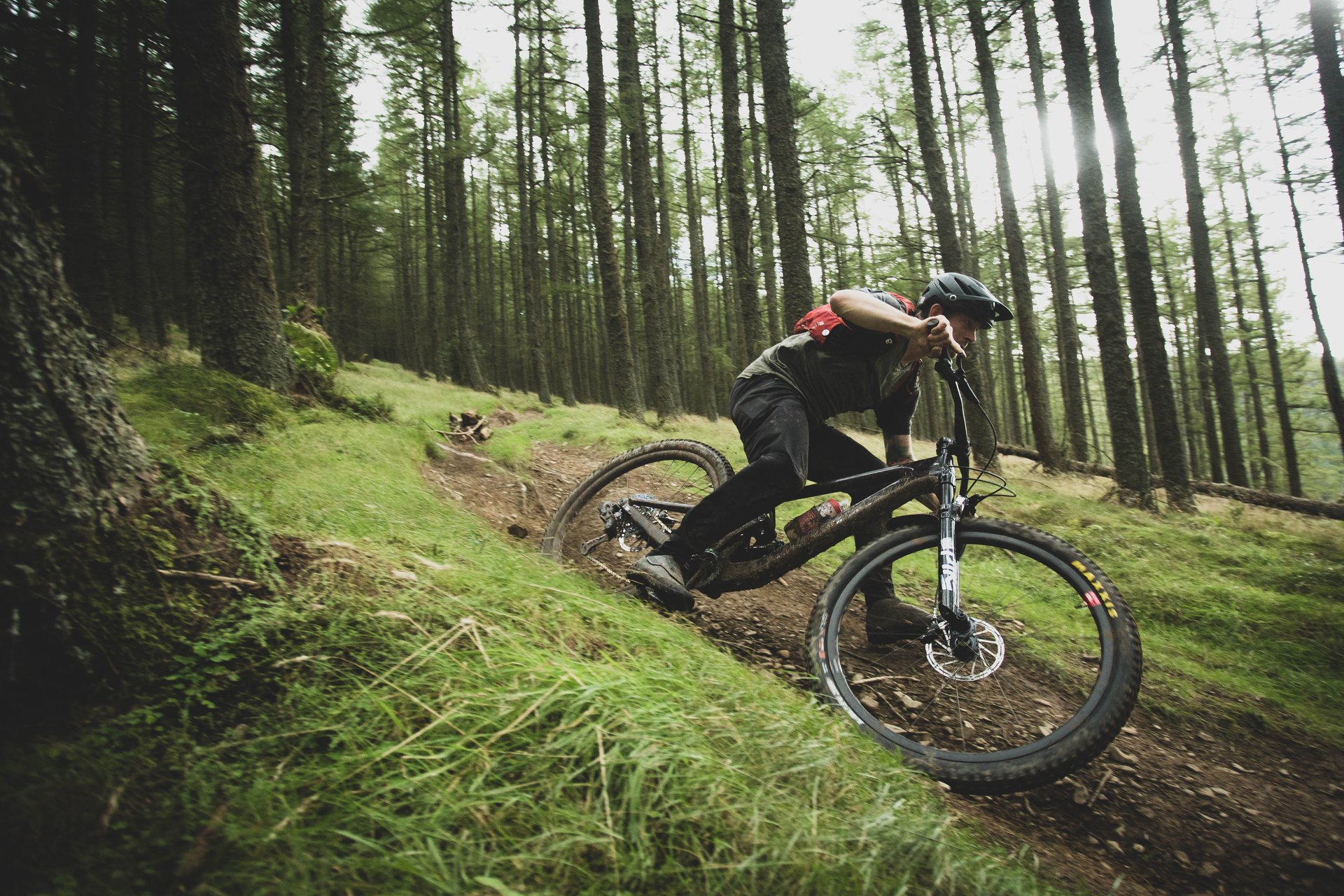
Seb Kemp knew how good it was, though, as well as a lot of other folks at Santa Cruz Bicycles. The brand has a long history of supporting trail builders, advocates, and other champions of the mountain bike community all over the world.
Central to all of this is the way the Scots have started working together: riders, builders, event organizers, advocates, and various levels of government, to figure out how mountain biking can benefit their economy and society. The fact that we're at a place where a sentence like that can be written is already a huge source of optimism. But what is taking place in the Tweed Valley goes several steps further than I could have imagined. Mountain biking is very well in Scotland, indeed, and part of the reason is due to the reshuffling of attitudes towards golf.
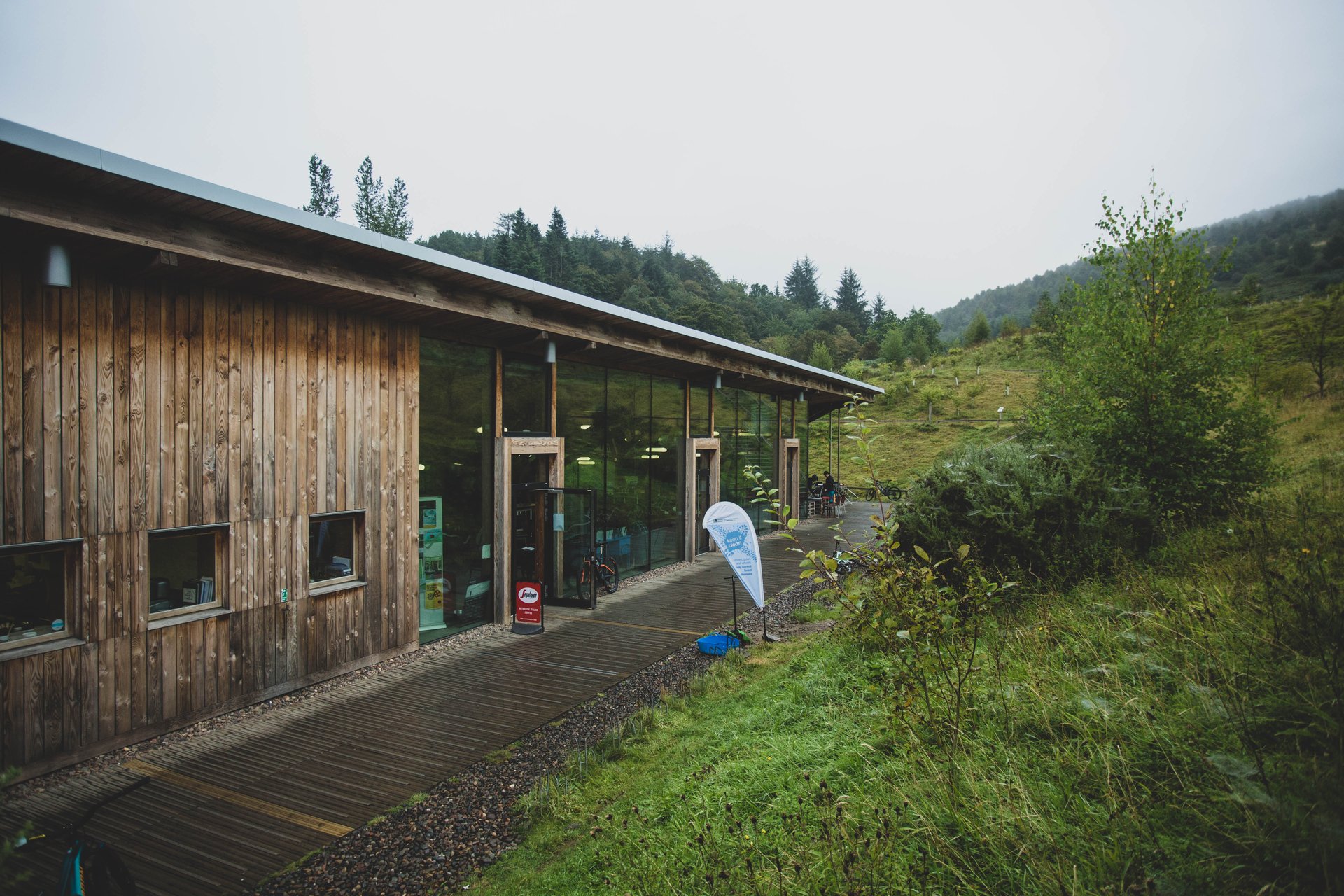
This is the Glentress Mountain Bike Trail Center. There's a great full service shop, a huge cafeteria with very good food (from carnivorous to vegan), good coffee, and, of course, a bike wash.
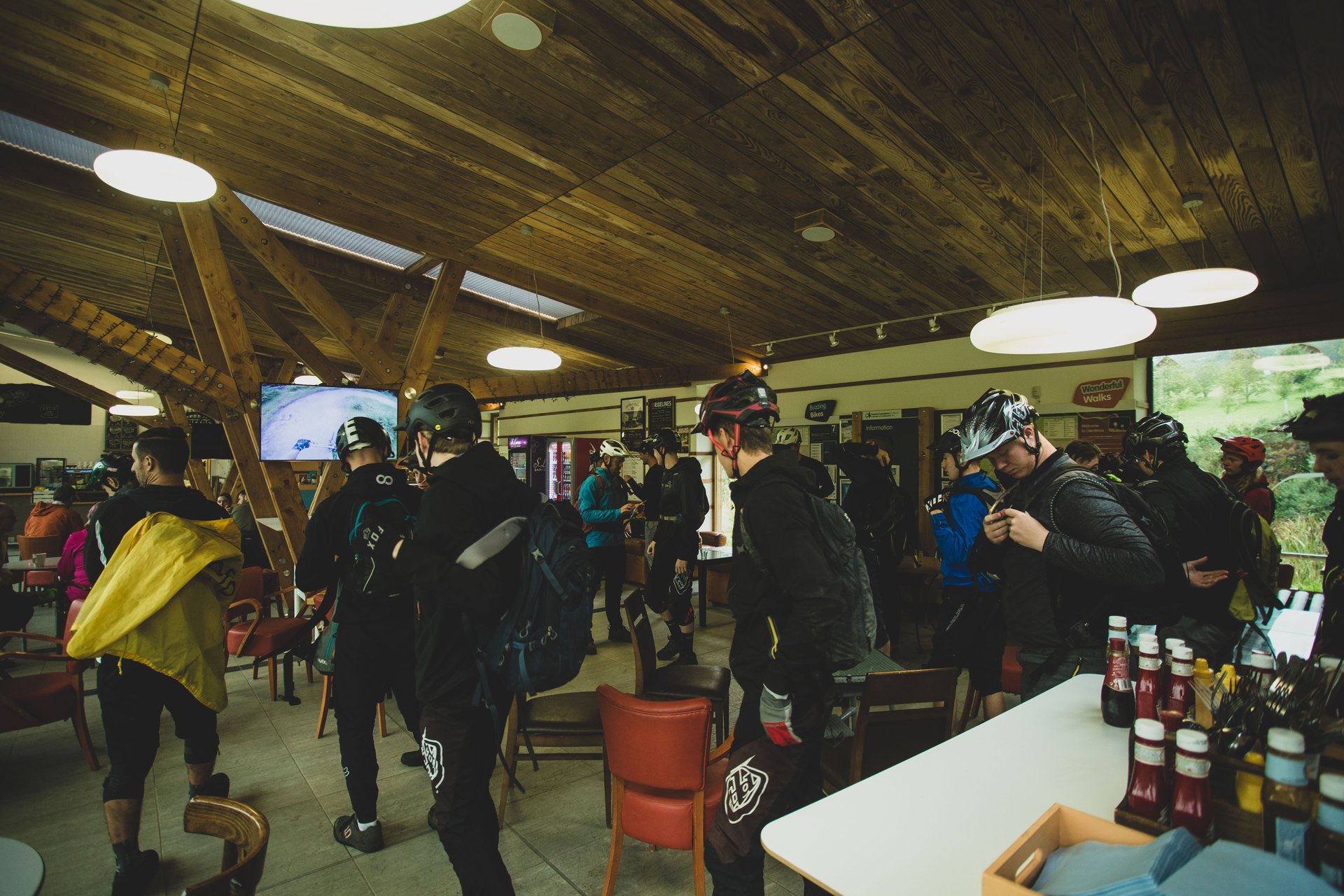
The BASE program frequently musters at the trail center before heading up the hill. This is like 8:30am on Saturday morning at ski school, except everyone is a rider, and they're doing this for college credit. 18-yr old me died and asked to be transported back in time to a heaven like this.
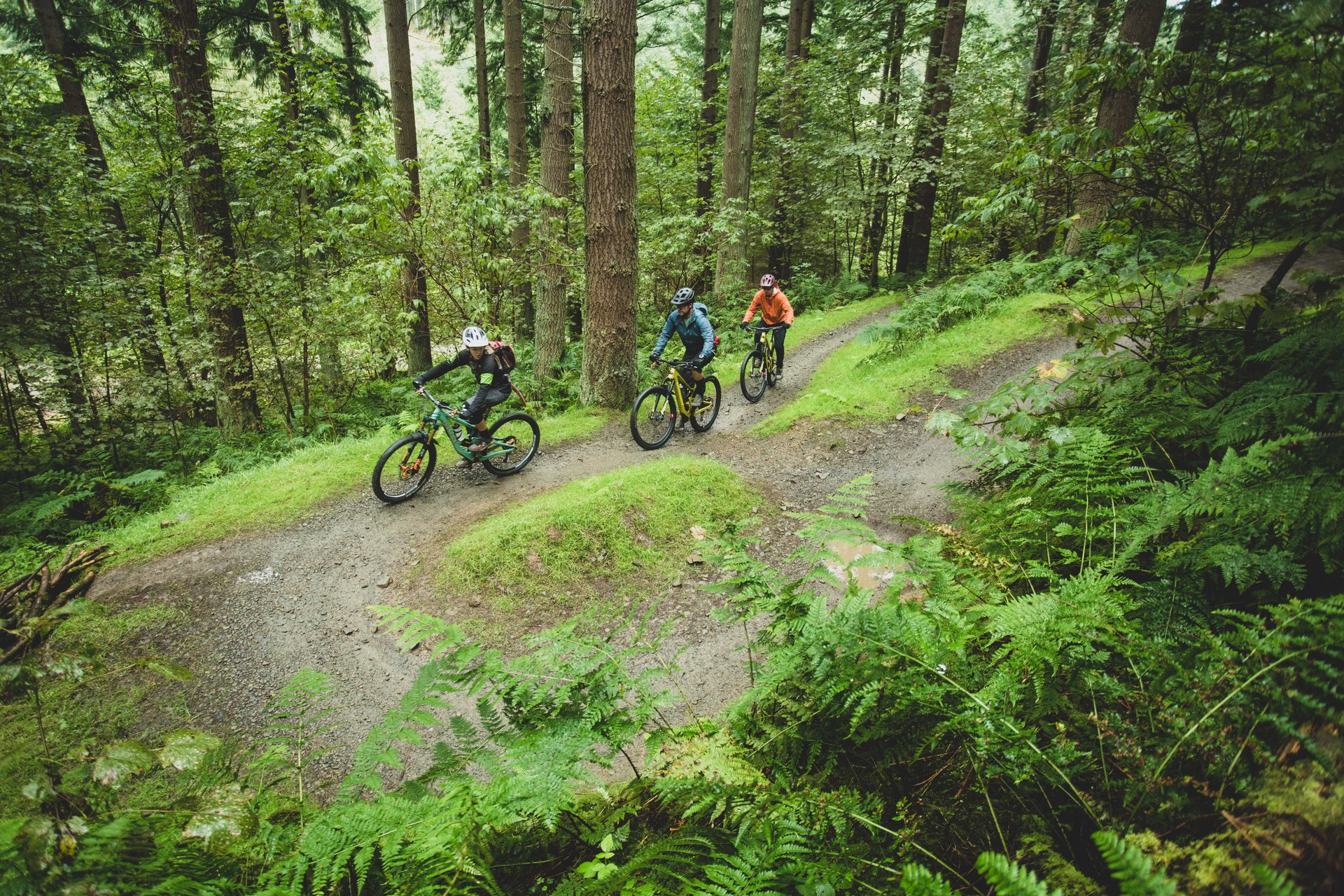
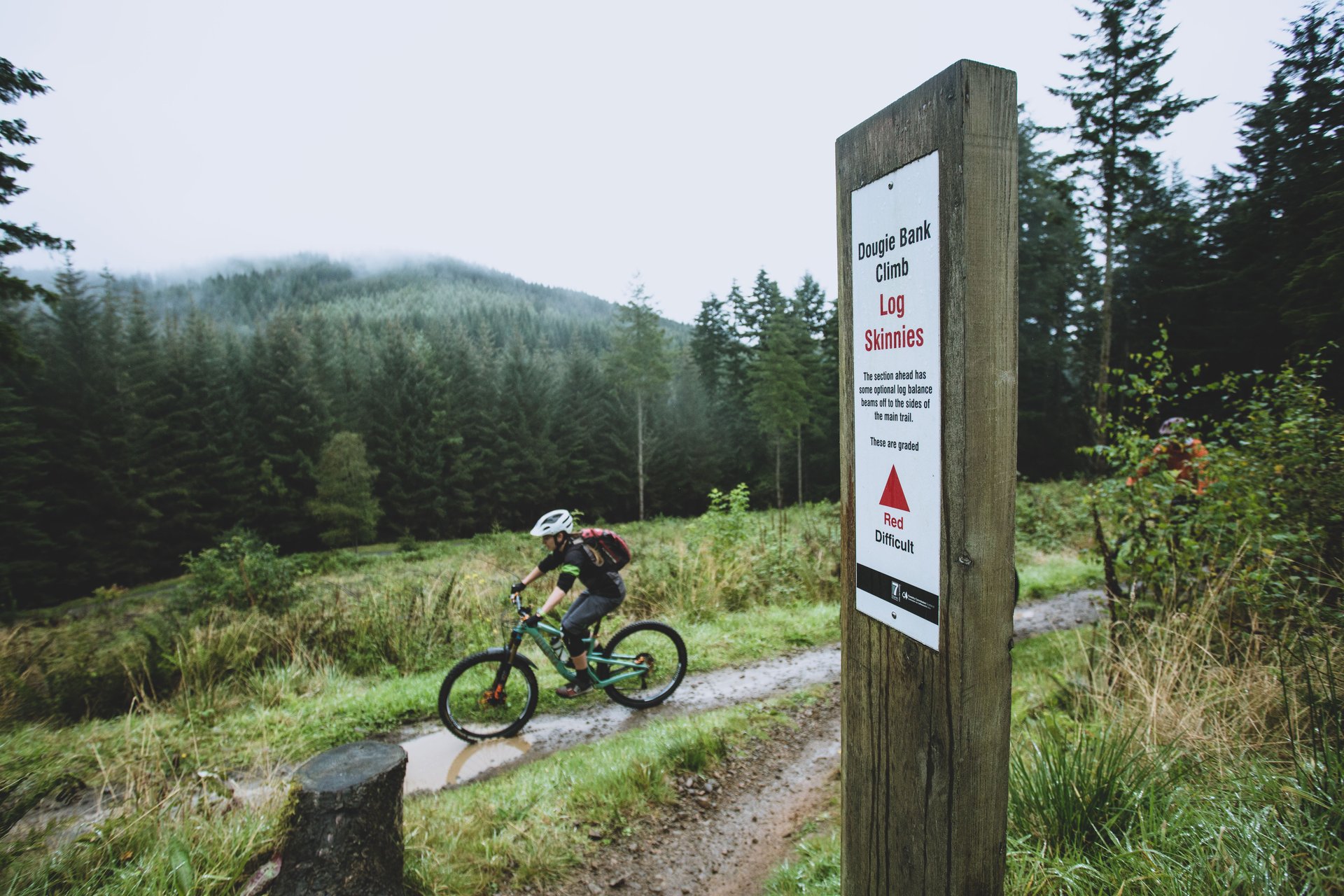
Mountain biking, golf, and land use: we can all learn from Scotland
So, why am I even mentioning golf in an article on this website about riding mountain bikes in Scotland? Other than the obvious fact that Scotland is the birthplace of golf, there are some common threads that came together for me over the course of these two very different trips, and one important cautionary tale. I'll keep it brief, but a little bit of background will help me illustrate.
To understand golf in Scotland, you need to know that golf as we know it in North America is, a lot of the time, a total bastardization of the game as it was originally intended. Although golf's origins as a leisure activity date back hundreds of years, when the only folks with time for 'leisure' were wealthy, the sport's origins are not consistent with the reputation it has here for five-figure membership fees, courses requiring huge amounts of water and chemicals to maintain, and lazy, fat people driving around in carts swilling crappy light beer and smoking cigars. The first golf courses were seaside links, scratched out of otherwise useless tracts of land: the strip between the coastline and the zone where land became valuable for farming. Grass grows in those strips, but little else - at least little else that is edible to humans. Courses popped up in these otherwise unusable zones of land, but this was well before the invention of land-moving equipment, meaning that the course routes were dictated by the landscape, not the other way around: dunes and swales covered in tall grasses as well as sand-filled depressions formed natural obstacles. Nearby farmers' cattle and sheep would graze on the courses, forming the first greenskeeping contracts: livestock was fed as it was keeping the grass short. Mountain bike trails have evolved in similar fashion: early on, they were rugged and natural (as many of us still prefer), but trail centers and bike parks have helped evolve flow trails, which generally require much more extensive use of machinery to move the dirt around.
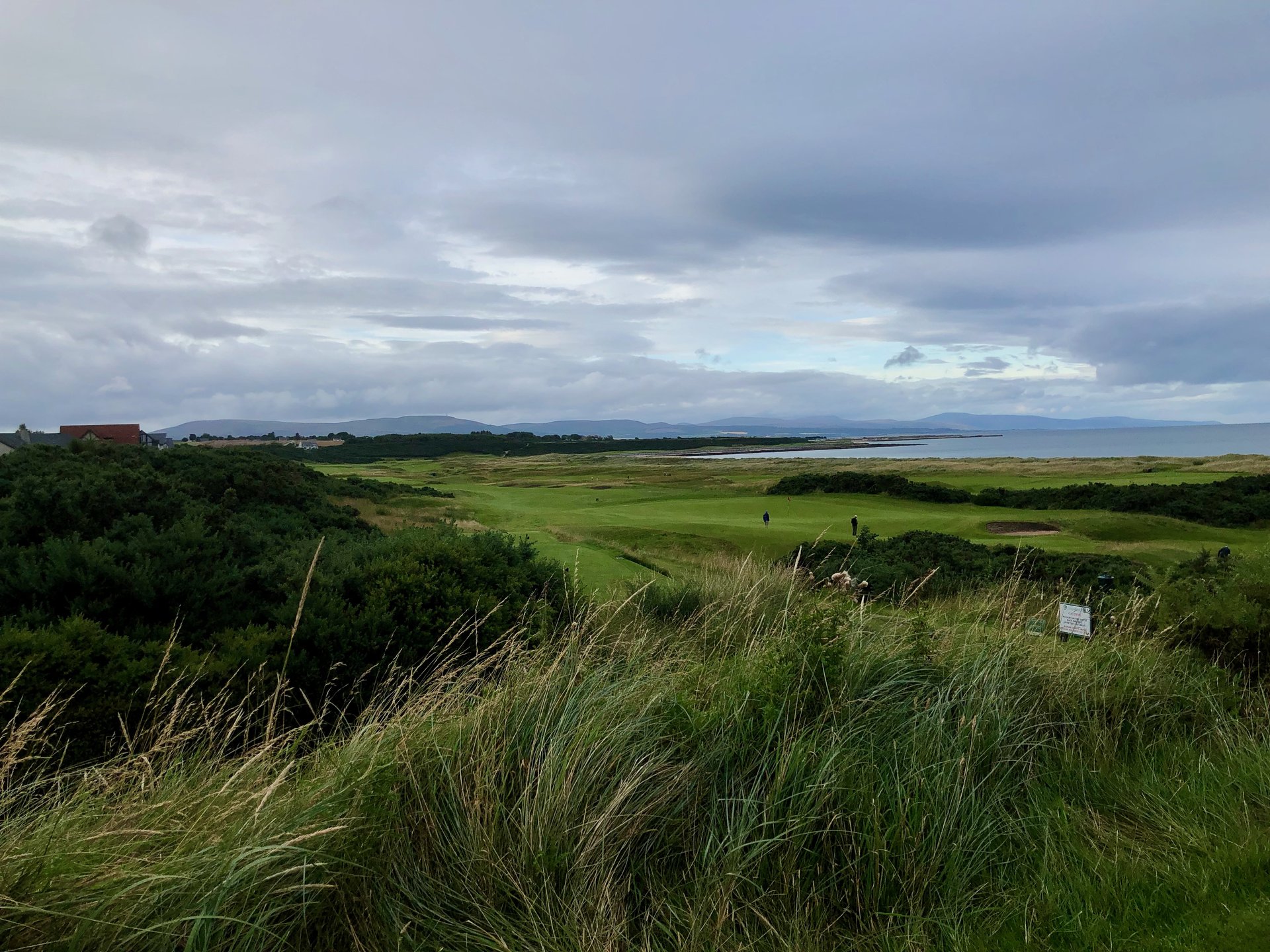
The first golf courses were shaped by nature, with minimal sculpting by humans - not unlike a lot of mountain great bike trails. This is an overlook of Royal Dornoch Golf Club, one of the oldest courses in Scotland and considered one of the best in the world. If you live in Dornoch, you can become a member and play as much as you like for about 500 pounds per year. You can't wear your hat inside the clubhouse, but your dog is welcome to join you on the course.
For sure the upper classes were the ones who had time to play golf, but as society evolved, many Scottish towns had their own links that were owned and maintained by the town, with their primary purpose being that of an accessible source of exercise and recreation for its residents. Over time, tourists arrived, and golf is now a huge driver of tourist dollars in Scotland. The problem is that in most places where it is played, golf is not as democratic as it is in Scotland, and while you can play golf cheaply on municipally-owned courses in Canada and the US, the amount of land it requires and our propensity to build courses in areas that require lots of water and added upkeep and chemicals in order to create a good course, make it difficult for the game to be sustainable or accessible for many. So, the outer world broke golf in some ways by shoe-horning courses into the wrong places, and partially as a result, the pool of would-be golfing tourists is shrinking (thanks also to a tough economy and competition for tourist dollars). Many courses in Scotland are still healthy, and yes, there are also swanky private clubs there, but those are the exception in Scotland - most courses can be played by anyone, but tourists pay more (much more) and that feels right to me; if each town's course is intended primarily for its residents, they shouldn't have to struggle to afford to play there. Others should be welcome, but they can pay for the privilege.
Within this context, we find places like Innerleithen and the Tweed Valley, named for the Tweed River (also the inspiration for Tweed wool which used to be the area's primary industry). The wool industry has also suffered as a result of globalization and the commoditization of cheap clothing. Some farmer's fields and sheep remain, but the local wool mills are mostly shuttered. As in BC where many resource-based towns are looking for the next economic driver to latch onto, mountain biking arrived in Scotland and found fertile ground. And as in BC and every other place that mountain biking has taken root, the first trails were built by early adopters to the sport, industrious rogue builders who decided that rather than seeking permission, they would build the trails they wanted and worry about begging forgiveness later - if at all.
This is a story we've seen repeat itself in all of the early hotbeds of mtb: a few pioneering sorts find a nice piece of forest and carve out a trail or three. They ride and build, often in the cover of night, to avoid detection by the rightful landowner. Eventually the landowner finds out and either approves, turns a blind eye, or is vehemently opposed, whether due to concern about liability or other reasons, both legit and bogus. As in coastal BC, riding is possible in the Tweed Valley pretty much year round. MTB tourism may not be firing in the dead of winter, but that doesn't mean the riding industry isn't still active, and it's no accident that brands like Endura are springing up nearby.
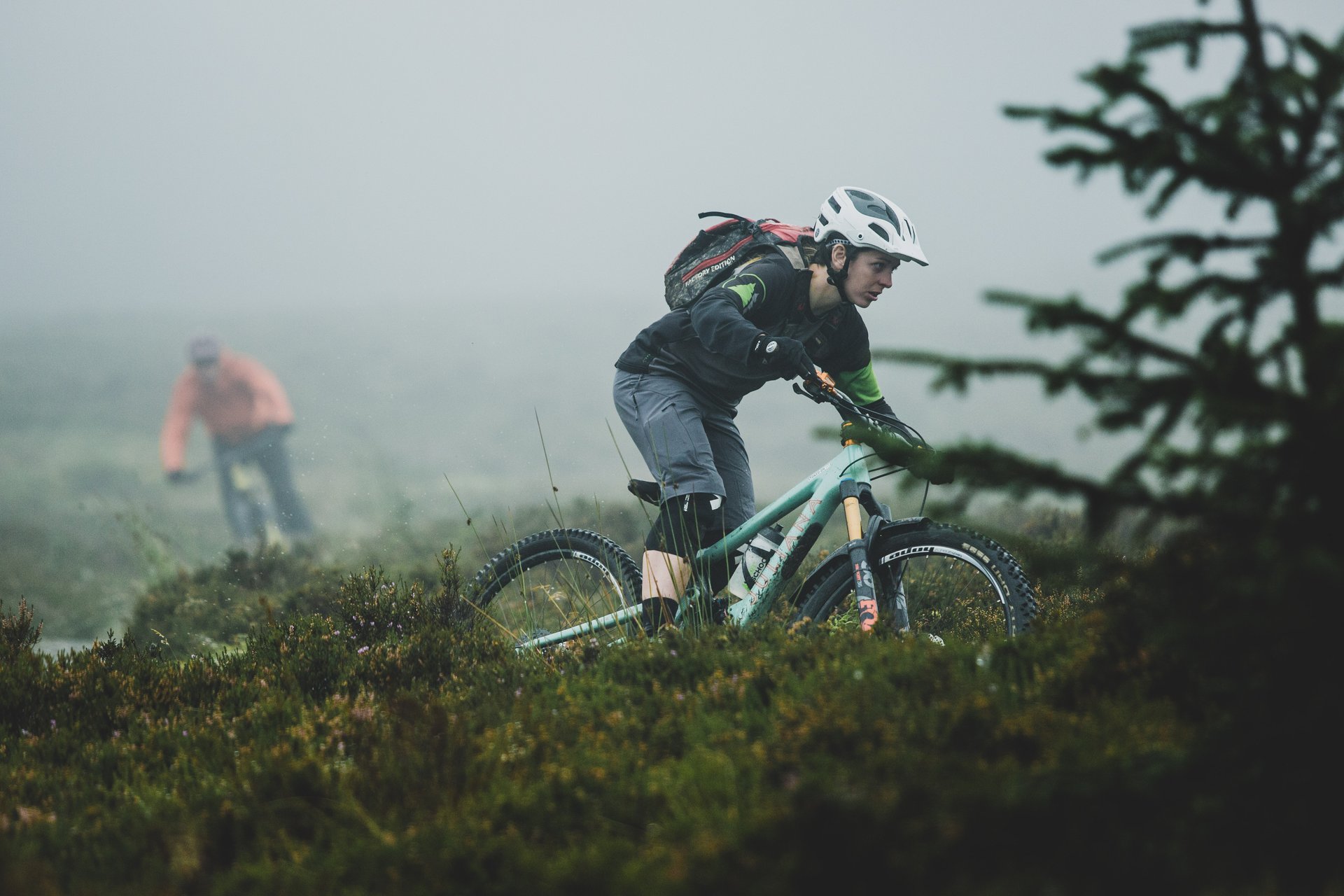
Janey Kennedy is a Dirt School coach and guide with Tweed Valley Guides.
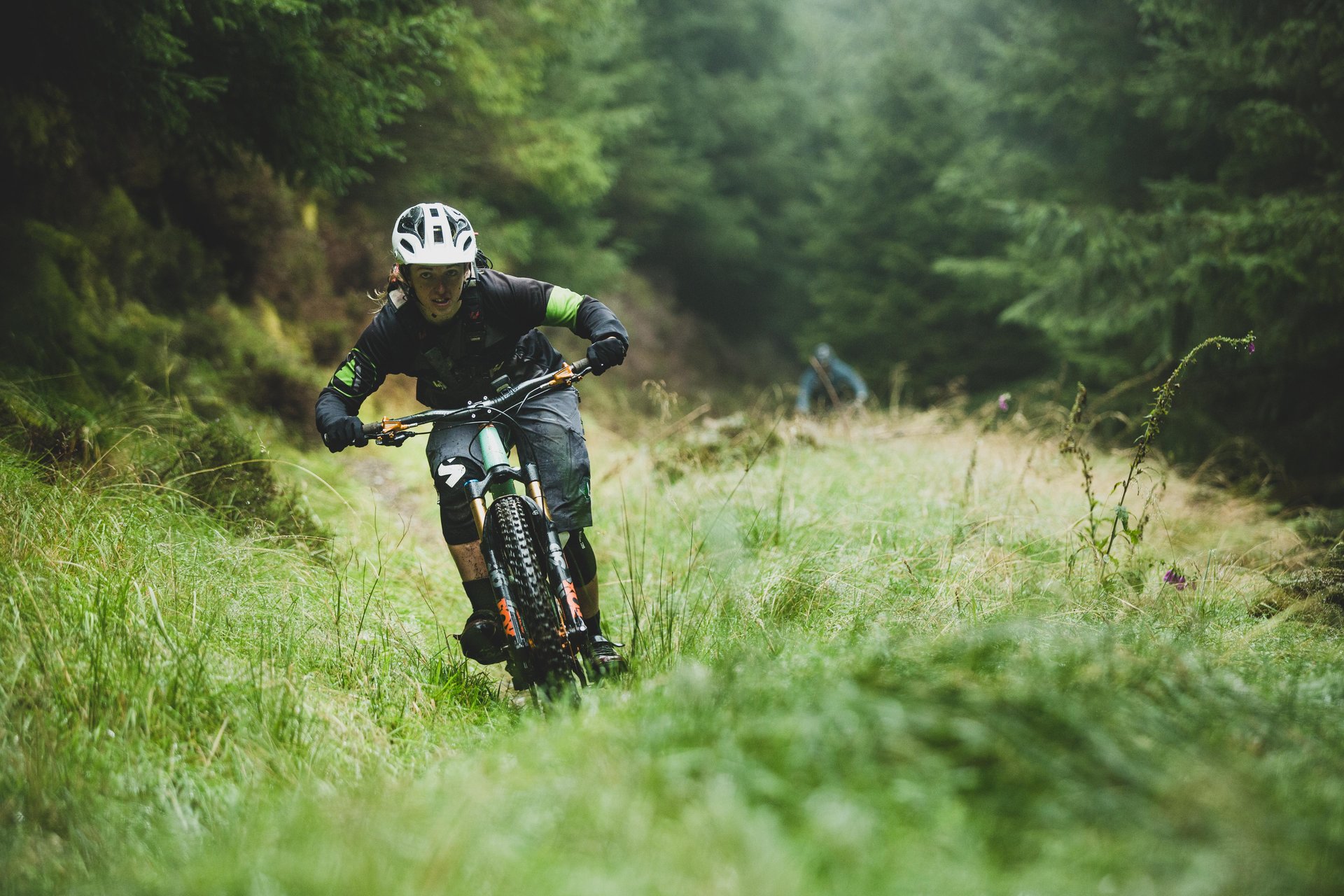
Janey is a strong rider who steps onto podiums in the Scottish Enduro series. She also has a strong climbing background. If you didn't think Scotland was steeped in mountain culture, think again.
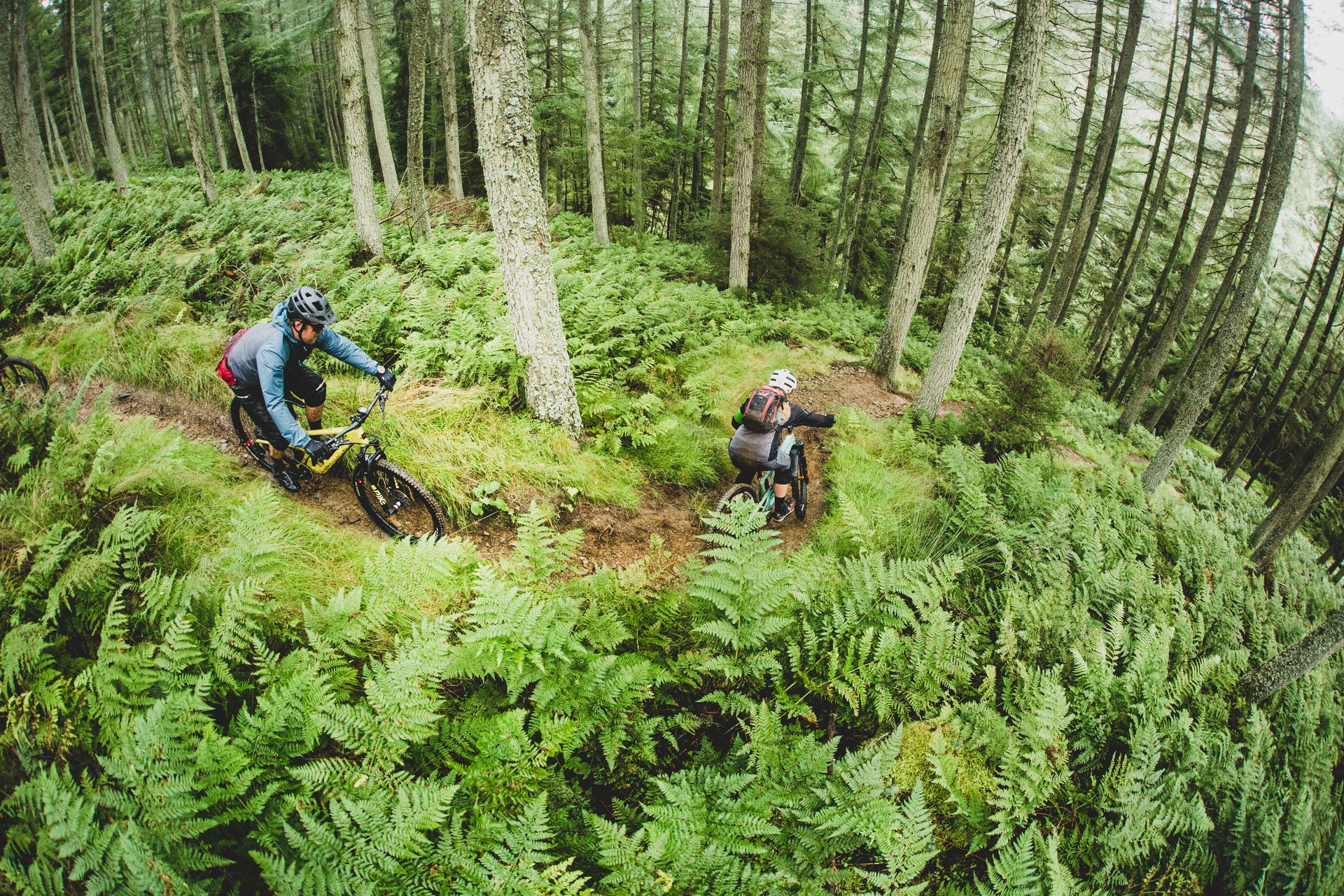
Nope, that's not Bellingham. It's Peebles.
We're all very familiar with this story, but it took EWS founder, former pro downhiller, and Tweed Valley resident Chris Ball, to put it in a context I'd never heard before. "Can you imagine a basketball court being built secretly, under cover of darkness?" he asked. "Mountain biking is like no other sport. Whether it's golf, or soccer or basketball - any sport, really - they have a field or a place to play, and that space was come by legitimately. In fact, it's normal for those facilities to be built and maintained by the government. But with MTB - and this is true everywhere - the trails were built without permission by rogue builders, and then the fight was on to gain legitimacy later. Mountain bikers have always had to fight for their ability to build trails and ride on them, and that's not like most other sports you can name."
Mountain biking has had to fight for its existence everywhere. Trails don't get built, they're secretly scratched out of a piece of dirt, often illegally, under cover of darkness or, at least away from prying eyes. The trails in and around Peebles are no different, but Scots have a secret weapon called the Freedom to Roam.
The Land Reform Act 2003 (which came into force in 2005) gives everyone rights of access over land and inland water throughout Scotland, subject to specific exclusions set out in the Act and as long as they behave responsibly. These rights are sometimes referred to as 'freedom to roam'.
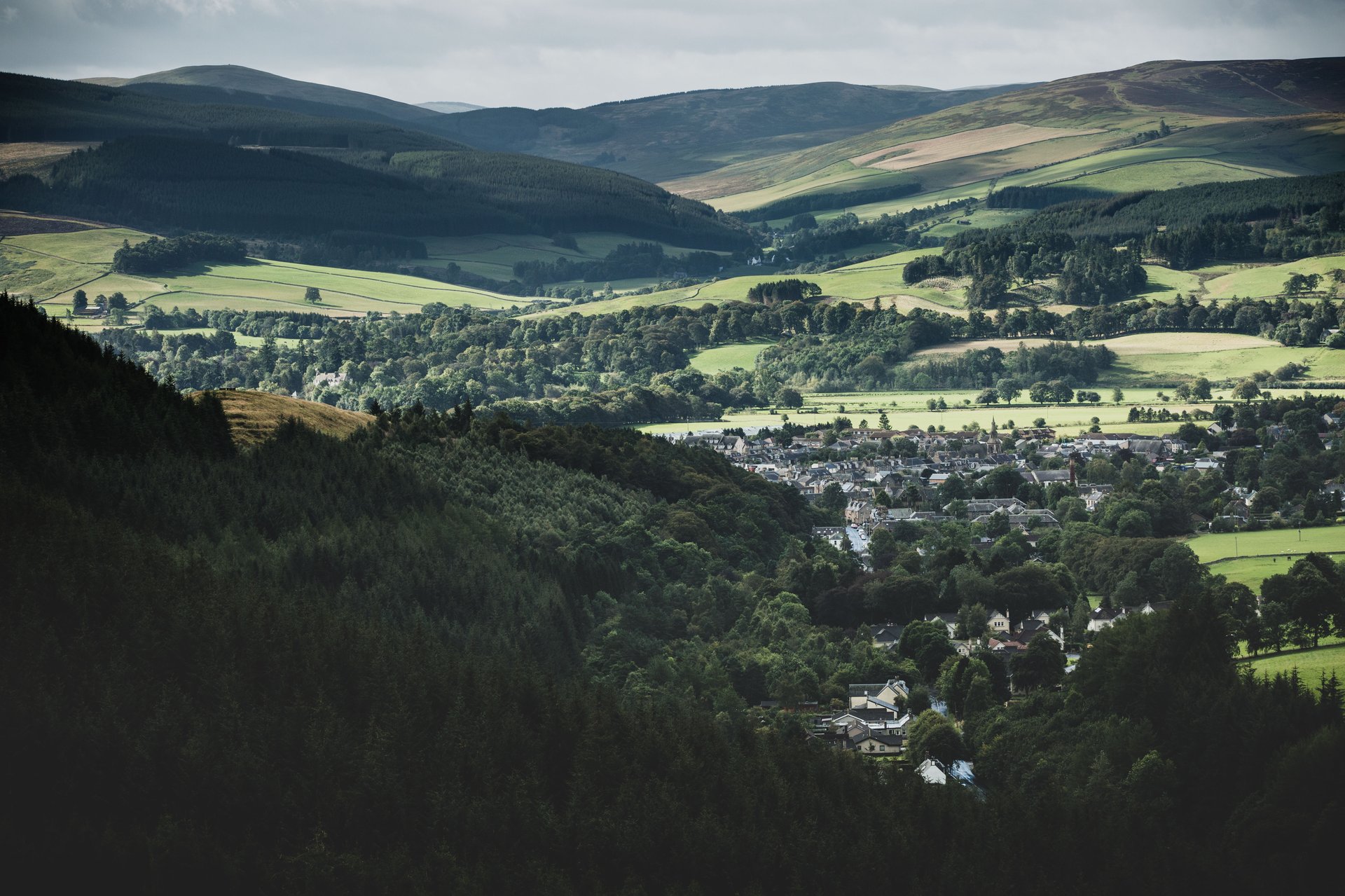
Any countryside that looks like this deserves to be enjoyed by everyone.
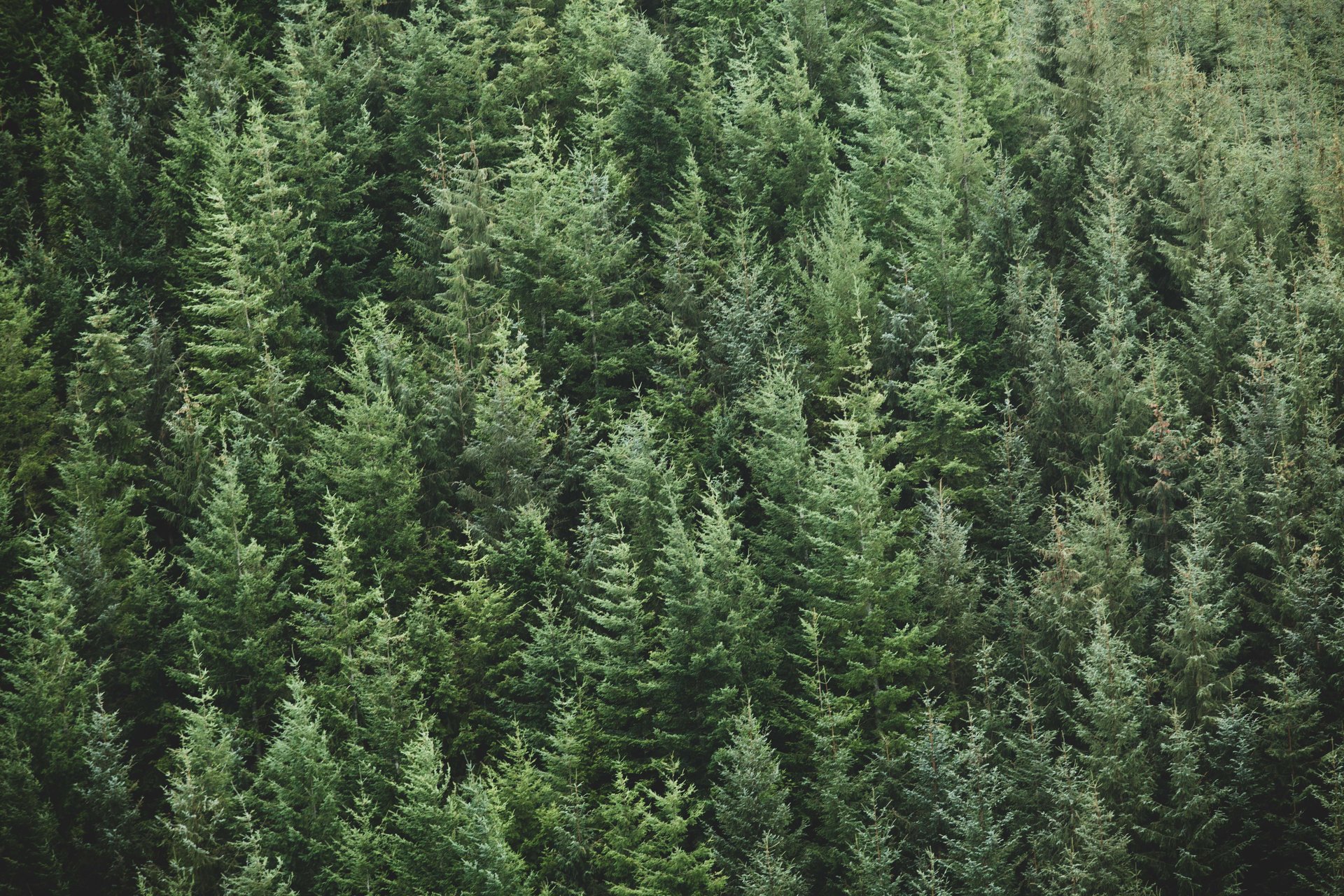
This could be any hillside in BC. But it's actually near Peebles in the Tweed Valley, Scotland.
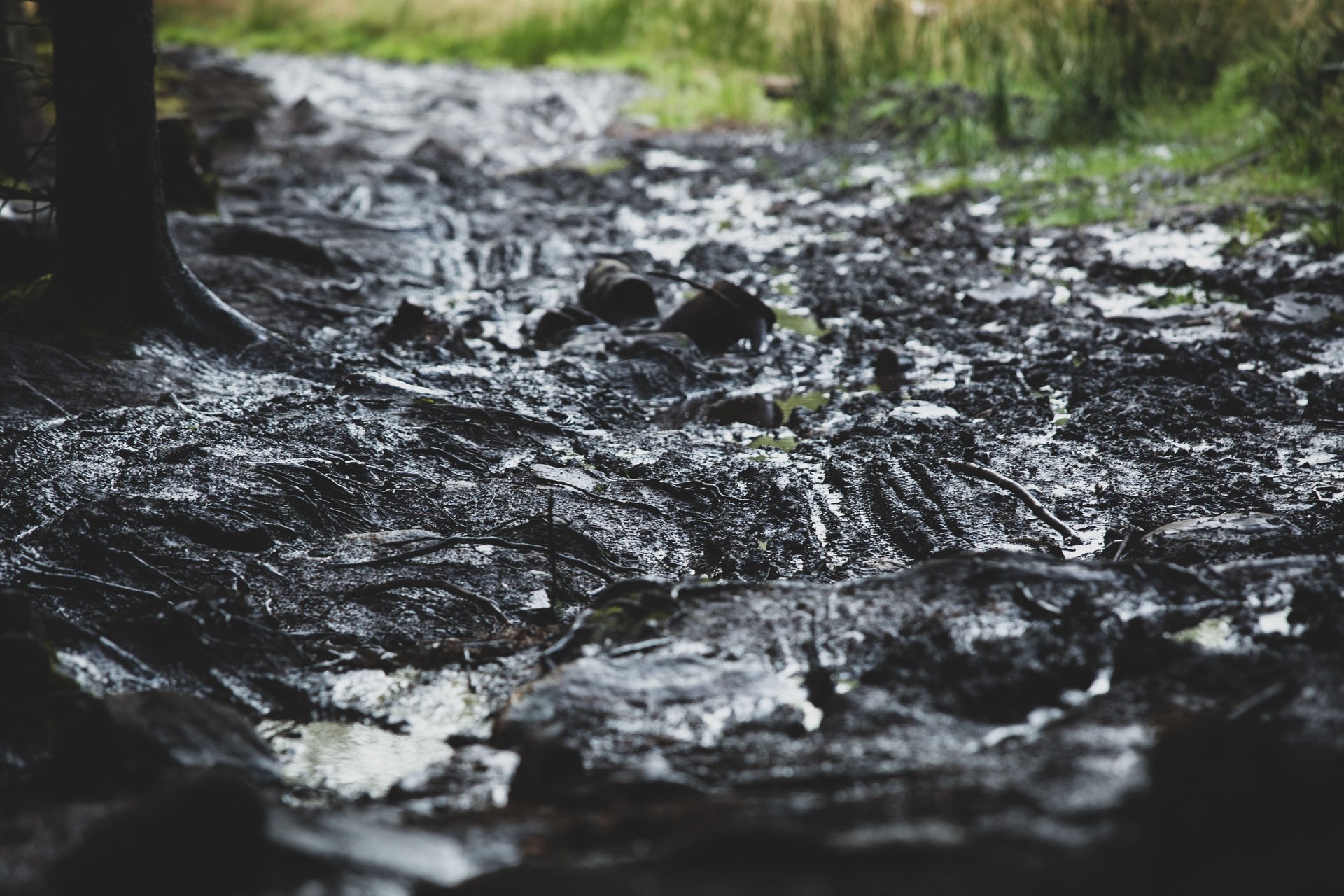
Under that beautiful green canopy, the mud is thick and deceptive. Scots and riders from coastal BC and Washington have a lot of conditions in common, but this mud is slipperier than anything I've encountered on two wheels, other than ice.
Freedom to Roam is a recent piece of legislation based on generations-old attitudes towards land ownership and use in Scotland. Golf courses are used by non-golfers as great places to walk, and dogs are welcome there. Sometimes the local links lies between your home and work, so your walk or ride to work may involve using its paths or fairways to get there. And while most mountain bike trails were illegal to build in Scotland, once they're built, the law states that you can't be kept from riding them. It is as quirky as it is beneficial to riders, but that doesn't insulate riders from all problems, and if anything, it creates extra challenges in uniting the community behind a new sport and the commercial influx it has the potential to create.
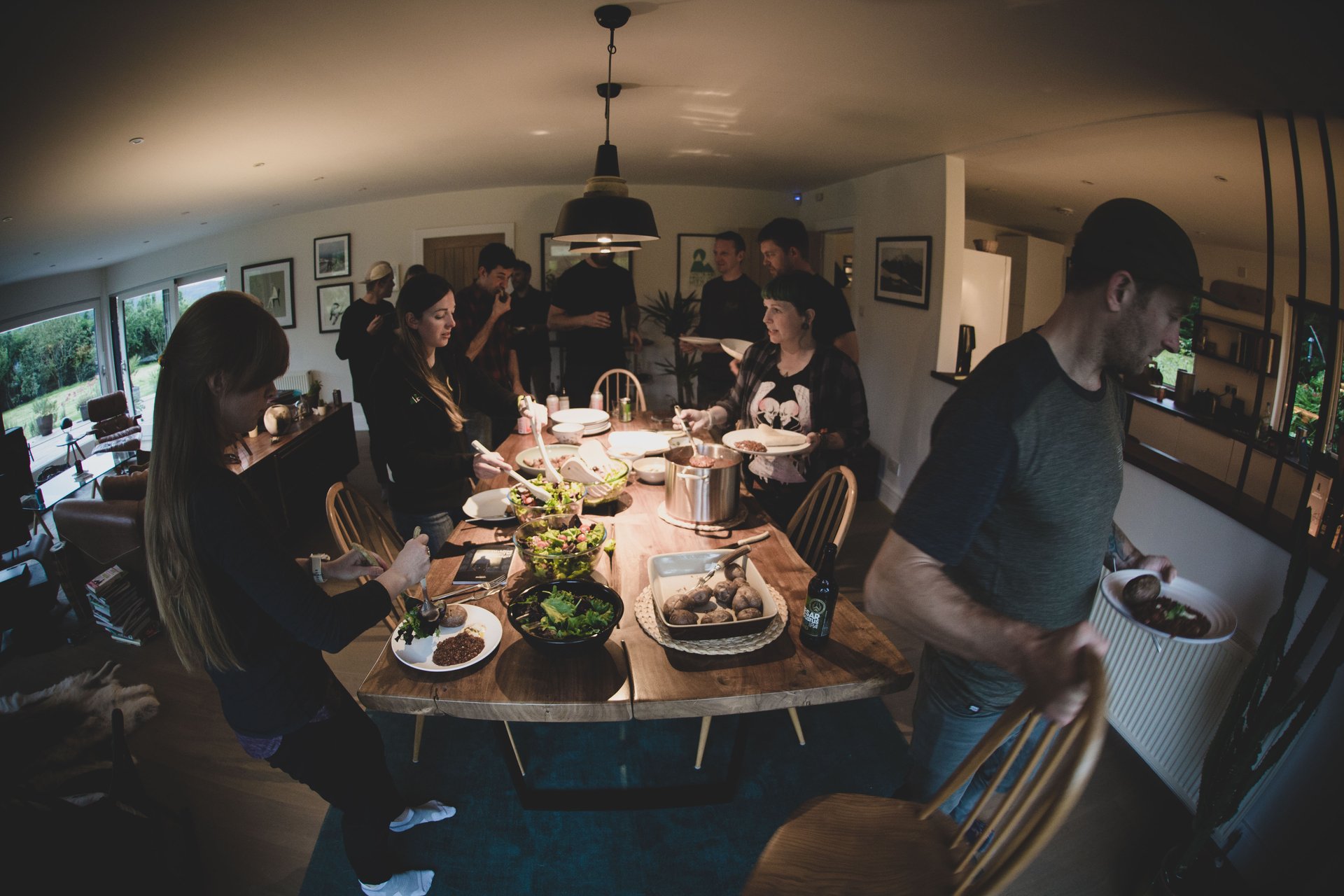
Chris Ball is not in this photo, but this is the living room of the house he and his wife Kate built. On my first night in Innerleithen, they hosted a dinner for a few TVTA board members, Dirt School coaches, some folks from Santa Cruz, as well as their UK distributors, Dirt Fish, and a jet-lagged Canadian journalist. It was a terrific spread, the atmosphere was great, and I had the impression it wasn't unusual for the Balls to welcome large groups into their home. Scottish hospitality was never in question, but Chris and Kate's easy going nature put a fine point on it.
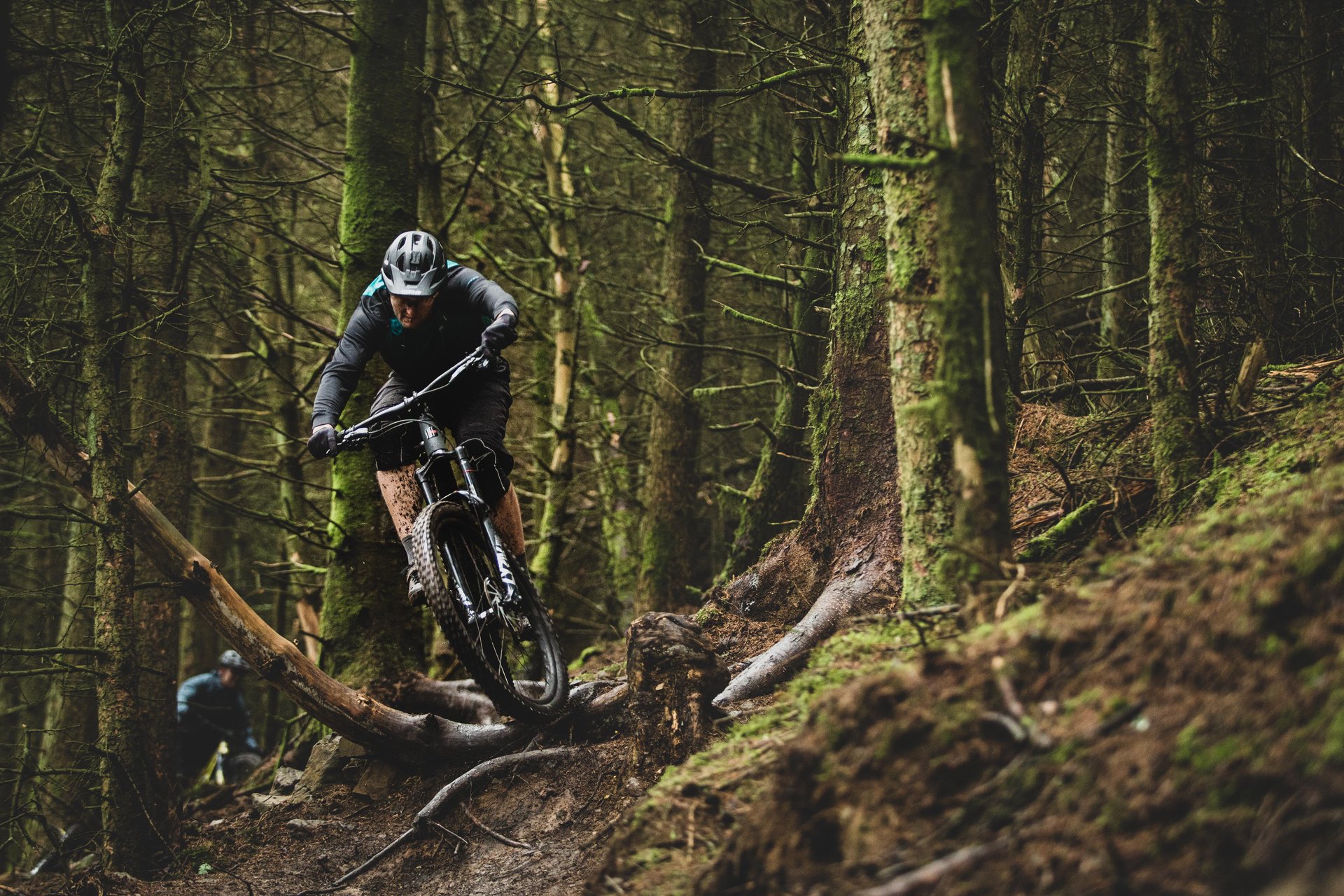
Chris Ball is a former pro racer, national team coach, and EWS director. But mostly, he's a Scottish rider seen here ripping in his home element.
As one of the founders of the EWS, Chris Ball's name has become synonymous with enduro racing. He's had a huge impact on our sport by virtue of running the race series that has done the most in recent years to influence the technology, culture, and even riding style of so many of us. But his positive impact on mountain biking dates back well before the formation of the EWS. It turns out that Chris Ball may be some kind of mountain biking alchemist, for he seems capable of turning dirt into gold. This has not happened by accident, nor luck. As a board member of the TVTA, Ball is one of many dedicated individuals working hard to unite the rogue builders, riders, various levels of government, and businesses in Scotland. Mountain biking everywhere needs people like this: those who can bring together the various parties that have such different mindsets. There are no two groups more diametrically opposed than trail builders and government agencies: one has no time or use for most rules, the other is dedicated to their formation and enforcement. To get them to sit down, discuss, and ultimately agree to terms is no small feat of grassroots diplomacy. This is the challenge that was laid at the feet of the TVTA, and it wasn't until 2019 that they had their first officially sanctioned trail day.
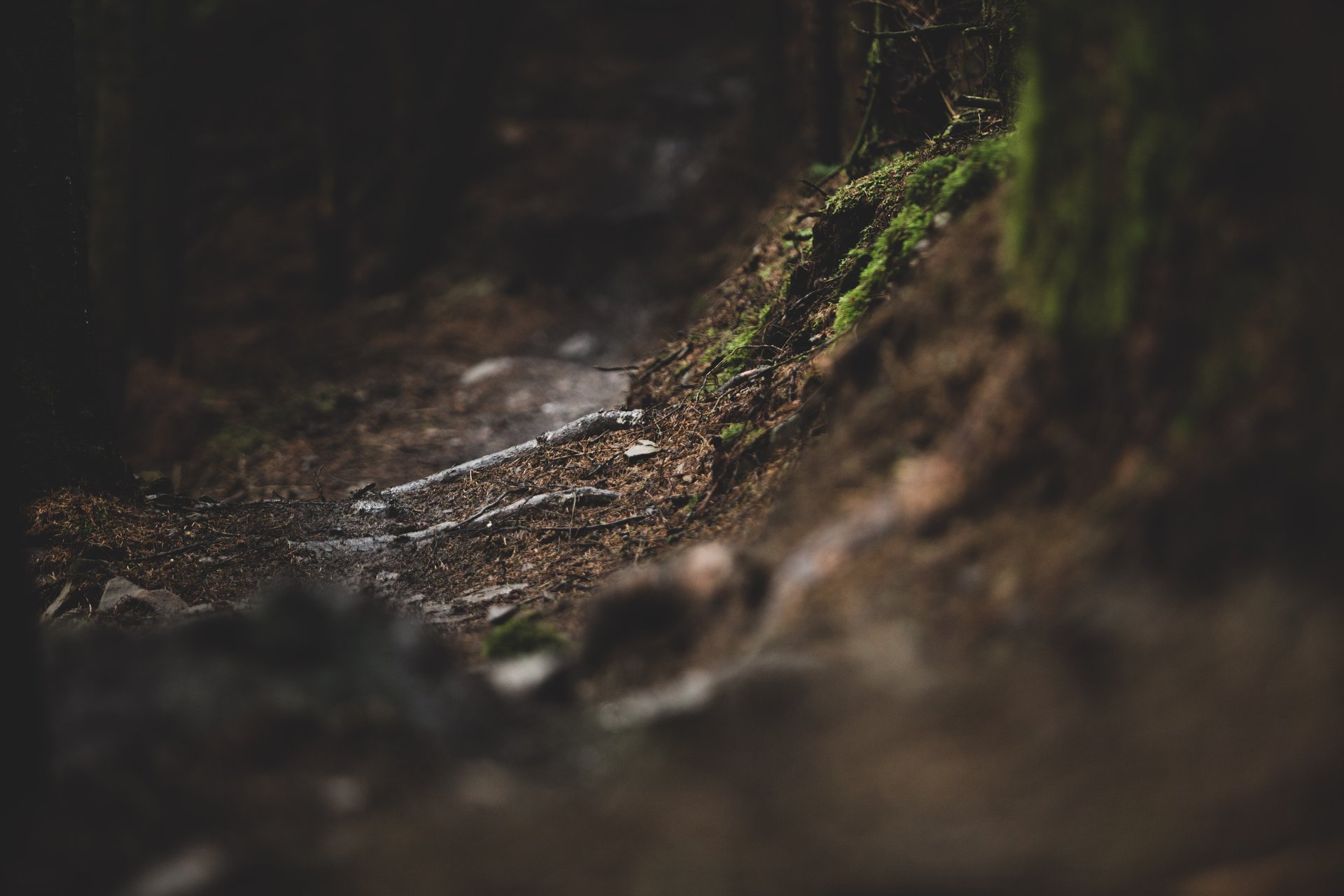
To others, it may seem strange that mountain bikers are so passionate about land that looks like this. To a rider, this is paradise. Mountain bikers in the Tweed Valley know how special their land is. Thankfully, businesses and governments at various levels are starting to get the picture.
Dirt School
If you were after an indicator of the health of the mountain biking scene in the Tweed Valley, Dirt School would be it. Founded with the intention of providing coaching that combines sports science and top-level experience as coaches and competitors, partners Chris Ball and Andy Barlow seem to have found a magical balance. Their students trust them to impart coaching that is developed in classrooms and labs as well as on dirt, and it's proven. Their coaches are all trained and experienced, and one of them is Ruaridh Cunningham, a Tweed Valley local and former World Cup top 10 DH racer. Over the course of three days of riding, I was fortunate to ride with Andy as well as one of Dirt School's coaches, Janey Kennedy, who both served as guides to the trails and the area. Gifted riders and coaches both, and great company whether it was in the middle of a climb or halfway through a pint at the end of the day. If you find your way to the Tweed Valley, hiring a guide will improve your experience immeasurably.
But a lot of riding hotbeds have great coaching programs and guides. What makes Dirt School special is the BASE College Course (Borders Academy of Sporting Excellence) which they run in conjunction with the nearby Borders College. BASE is a two-year college program that sees students spend three days a week on their bikes and two days in the classroom - every week, throughout the school year. Admission to the program doesn't require the highest marks or best skills on the bike, instead they're looking for desire to learn and open minds. Graduates of the program have gone on to race on the world stage, but they're also learning skills they can use towards careers in coaching, training, or just confidence and skills that will benefit them as they enter the next stage of their lives. As much as I loved my university days, this is absolutely the kind of program that would have helped me find a new level of motivation and interest. Plus, who wouldn't love their homework to be aimed towards becoming a better or stronger rider, rather than another 100 pages of 18th century history?
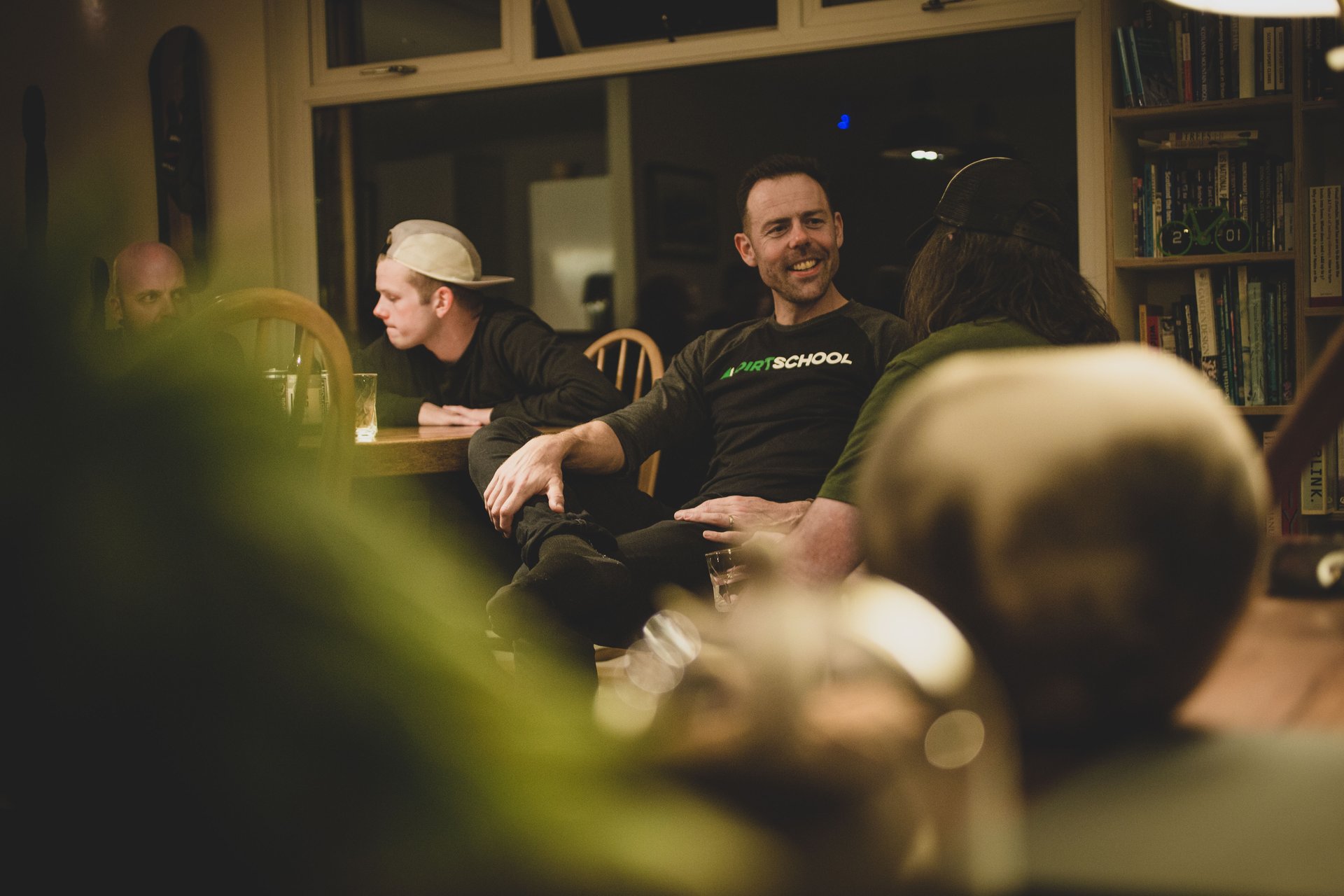
Dirt School director Andy Barlow always looks like the cat that just ate the canary. Which he sort of is, when you consider that he's paid to make mountain bikers better, but through his work with BASE, he's also helping turn young riders into motivated adults with skills and confidence to tackle whatever comes next. It's hard to think of a more fulfilling way to put your love of MTB to work.
The whole idea clicks when you read what Andy has to say about it:
"The trick really is to recognize that they're not just learning how to ride mountain bikes. What you're actually doing is you're able to capture people that wouldn't normally be interested at all in any sort of academic pursuit, and by giving them the opportunity to study something that they already enjoy, that switches them on intellectually. If they apply that same strategy of, you know, breaking something down into its component parts, working on your weaknesses, and then building it to be something stronger, you can take that attitude, they actually apply that to furthering their education, to running a business, even their social life, you know, so there's lots of different aspects of how you can apply your mountain biking qualification to much bigger parts of your life."
In part two of this story, I'll talk a little more about the Dirt School experience, and dig deeper into the riding in the Tweed Valley and why you need to go there to experience the trails and the incredible riding culture for yourself.
Age: 46
Height: 6'1 // 185 cms
Weight: 195 lbs // 88 kg
Inseam: 32" // 81 cm
Bar width: 780 - 800mm // Reach: 485 - 500mm // Dropper: 180 - 200mm
Flats or clipless: Default clipless, flats for zesty stuff
Trail(s) of choice: VFR and a bunch I can't name
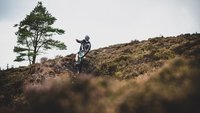
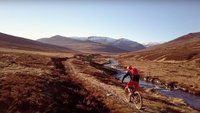
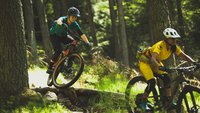
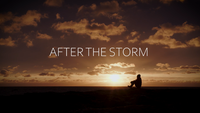







Comments
danielshiels
3 years, 10 months ago
Funny how the grass is always greener, I ride 4 or 5 times a year up there and would still sell a kidney to ride in bc. These are the best trails we have in the UK, particularly the off piste ones in glentress and golfie. The scene is amazing there as evidenced by icycles in Innerleithen lending me a shock when mine blew on Fri and meeting me in a cafe on sun to get it back to save my weekend with no demand for a deposit etc, just wanting to get me out on the trails they're all rightly proud of. You couldn't want a better place to ride or better trails
Reply
Pete Roggeman
3 years, 10 months ago
I live here in BC of course, and I do think we have the best trails in the world. But seeing other places from the saddle is pretty special, and meeting other like-minded folks - whether they be golfers or mountain bikers - has usually found me in good company as well. Our sport is gaining a lot of long-term strength as a result of all of these well-established riding areas in different parts of the world.
Didn't get a chance to visit Icycles but I did hear a few similar stories about what a great shop it was and how dedicated the owner was to the community.
Reply
Tehllama42
3 years, 10 months ago
Yeah, that is the case. I'm ridiculously spoiled in that pipebands have meant that I've gotten to ride a bit of both (though mostly Silver Star, and the trails around Milgavie respectively)... they're all properly amazing, but my reaction is also that even though these are objectively a better time than what I ride a twenty minute pedal from my doorstep, the difference is small and I get to know the local trails to the point where I can actually have more fun.
Reply
Cam McRae
3 years, 10 months ago
You’re one of the pipers who used to show up at Silverstar right after we were done running The AIRprentice? Amazing!
Reply
Tehllama42
3 years, 10 months ago
Admittedly one of the drum-dums attached to that group, but yes.
I'm surprised Silver Star hasn't done more to have some invitational MTB events on the evenings where PHSD would have concerts. The only thing more astonishing than the musicanship on display is the ability to dispatch kegs, and I figure that's something the MTB community would be onboard with (free entertainment already provided).
Reply
rolly
3 years, 10 months ago
I think people define "paradise" a little differently, lol.
Reply
bingobus
3 years, 10 months ago
Hi Pete, I can add a few things to the history of the area having been involved there from the very early days building trails and hosting events that Chris and Andy would race as juniors. First thing though tweed fabric was named after the Tweed Valley which is named after the river Tweed which runs through it and had done for a few thousand years before textile factories arrived! When you crossed from the village to Traquair that was the river Tweed beneath the bridge. A few years ago it flooded and washed away all the huts in the parking lot there which is why they are up on the side of the hill now...
The first trails cut in the area were approved and signed off on by the forestry and not rogue trails. I have no doubt they began to exist not long after but those first ones were cut explicitly for organised DH racing with forestry approval, we may have not strictly stuck to the remit of what was allowed to be constructed but the courses were checked and signed off on while they turned a blind eye to the chainsaws. At the time Forrestry Commision of Scotland were under pressure to sell their interests to private hands unless they could prove that the land was being used and of value to the public and so were keen to encourage recreation to protect their holdings. The golfie, Traquair and Cardrona consequently had trails built and held some of the earliest DH in Scotland. Glentress was already well used for hiking and xc at this time and later became the main focus of development by the forestry investing their own time and money into the trails. A publicly funded trail network inspired by the success of the UKs first trail center on the Welsh coast at Coed y Brenin!
The prize for actual first DH however goes to an event held in Innerleithen on the glofie side by John and Andrew of The Bicycleworks in around '94, more of a Mammoth mountain fire road descender style event won by Jonathan Mcbain.
Reply
Pete Roggeman
3 years, 10 months ago
Thanks for the added detail! Very interesting to hear about some of the early building and history of the area.
Reply
olaa
3 years, 10 months ago
Great article! The part on the Freedom to Roam resonates with how things are in Norway where I live. It grants access to fantastic riding, but there are loads of grey areas on what is allowed. Also, getting permission to build things can be tricky since it is hard for the land owner to benefit from it. The result is often continuous improvements on natural trails, but very little purpose-built trails.
Heavy use by different user groups on the same trails can also cause issues. Specifically when a lot of new riders see videos from other locations (BC for instance) of high speed shredding on purpose built trails. Doing the same thing on multi-use trails does not always work out well.
On a positive note we have massive amounts of great natural trails available :)
Reply
danimaniac
3 years, 10 months ago
Just follow the red T
Reply
olaa
3 years, 10 months ago
Or the blue markings :)
Reply
LWK
3 years, 10 months ago
this was really interesting - I knew golf was born in Scotland but had no idea the extra details and info provided here. the shared use land use paradigm is also a pretty cool perspective.
Reply
Andy Barlow
3 years, 10 months ago
Great article! It's so nice to see how someone from outside the Tweed Valley sees our beautiful wee spot. Thank you for a great write up, Pete.
Reply
Karl Fitzpatrick
3 years, 10 months ago
The one opportunity I had to ride overseas was in Glentress when I managed to convince my wife to take a beeline between Glasgow and Edinburgh.
The LBS in Peebles Village rented me the crappiest hardtail with, what I'm sure were, brakes cleaned with WD40.
I spent a half day pedaling around the legal trails unguided and had an awesome time.
Would love to get back there and be more organised/meet some locals/rent a better bike etc.
Reply
Pete Roggeman
3 years, 10 months ago
It only stopped raining long enough to be snowing, and the trails were uphill both ways...best ride ever! Sometimes those rides are the most memorable.
Reply
Andy Barlow
3 years, 10 months ago
We'd love you have you back in the future, Karl. Check out Tweed Valley Bikes the next time you're passing through Innerleithen. We have a great selection of regular and e bikes for rent, and it's run by the same team as Dirt School and Tweed Valley Guides. You could stay here for a week and never ride the same trail twice.
Reply
Jerry Willows
3 years, 10 months ago
Pretty rare for the trails to be dry there so that would be an adjustment for me.... I do like the speed and flow of the trails there (from the youtube vids).
Reply
Pete Roggeman
3 years, 10 months ago
In the three days I rode there, I was mostly wearing a light jacket or long-sleeved jersey, and waterproof shorts. I thought I would care, given it was September and that's usually one of the best months to ride back home, but I didn't. A lot of the trails felt remarkably similar to some of what we ride on the shore. Plenty of steeps, roots, rock, and quite technical. And of course, other trails and areas were quite different but it was a remarkably diverse selection in a fairly small area. Plenty of speed and flow, and just like at home in the wet, you get used to it pretty quickly, and it makes for good feedback on your technique.
Reply
Please log in to leave a comment.